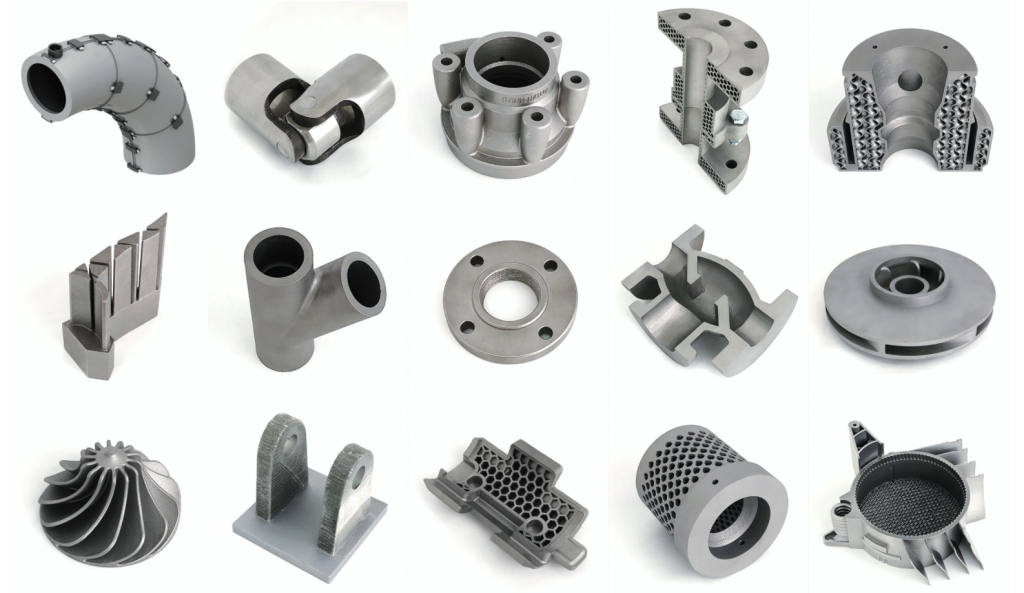Aluminum Castings Company Fundamentals Explained
Table of ContentsThe Buzz on Aluminum Castings CompanyThe 2-Minute Rule for Aluminum Castings CompanyLittle Known Facts About Aluminum Castings Company.Unknown Facts About Aluminum Castings CompanyAluminum Castings Company Can Be Fun For AnyoneThe Ultimate Guide To Aluminum Castings CompanyAll About Aluminum Castings CompanyIndicators on Aluminum Castings Company You Need To Know
There are 2 key sorts of die casting made use of in the light weight aluminum casting market: hot chamber pass away spreading and cold chamber pass away spreading. The key distinction in between these methods is how the molten steel is delivered to the mold. In warm chamber pass away casting, generally used for reduced melting point steels, the melting pot is straight attached to the device, and a plunger compels the material via a gooseneck right into the die cavity.
More About Aluminum Castings Company
In these techniques, the mold and mildew is purposefully damaged or escaped in order to draw out the ended up aluminum spreading. Usual procedures under the classification of expendable mold and mildew casting consist of (financial investment casting),,, and investment casting. When making customized light weight aluminum parts using expendable mold and mildews, suppliers pour molten light weight aluminum or aluminum alloys right into the mold and mildew, which is after that busted apart to launch the strengthened steel part.
The is among the oldest and most favored types of light weight aluminum spreading. It involves condensing specialized foundry sand, commonly enhanced with clay or resin, around a precisely crafted recyclable pattern that figures out the shape and inner details of the completed aluminum item. The pattern system integrates risers and vents to take care of the circulation of liquified metal and to protect against casting flaws such as shrinkage porosity.
The Facts About Aluminum Castings Company Revealed

This mold and mildew is after that preheated before the putting of liquified aluminum or light weight aluminum alloy. As the metal fills up the shell, it catches the complex information and great surface area coating of the mold. When cooled down, the ceramic is mechanically or chemically escaped, enabling the elimination and separation of specific actors parts.
Everything about Aluminum Castings Company
Irreversible mold and mildew casting makes use of recyclable metal molds and is suitable for mass production with regular high quality and much less waste. Expendable mold and mildew casting utilizes single-use mold and mildews, like sand or foam, providing style adaptability and lower tooling expenses for prototypes or brief runs. Pass away spreading is best for generating high volumes of light weight aluminum components that require tight resistances, great details, and smooth surface areas.
The Toshiba Machine DC-J Collection includes die casting makers ideal for aluminum. Known for their robust construction and high shot performance, these machines guarantee effective and exact spreading (Sand Foundry).

While aluminum can be used in its pure type, it is frequently alloyed with various other metals to enhance its residential or commercial properties or the buildings of the other metals. Aluminum alloys are categorized into eight collection, numbered from one to eight.
An Unbiased View of Aluminum Castings Company
This alloying boosts the strength and hardness of aluminum yet reduces its ductility and rust resistance. The 2000 series alloys are testing to weld but can be warm treated to improve their properties. The 3000 collection alloys are mainly alloyed with manganese. This combination boosts rust resistance while offering moderate toughness.
The 4000 series alloys are alloyed with silicon, which reduces the melting factor and boosts fluidity. This makes it a popular selection for casting, as it is easy to create in its molten state.
The Single Strategy To Use For Aluminum Castings Company
This collection is categorized as a high-strength alloy, specifically suited for sheet and plate applications as a result of its exceptional weldability. Its resistance to deterioration from acids and antacid makes it perfect for usage in extreme and hostile atmospheres (Aluminum Castings). The 6000 collection alloys are alloyed with both magnesium and silicon, supplying an equilibrium of strength, mechanical properties, and rust resistance
Handling the 6000 series needs specialized and sophisticated equipment, which can be complicated and expensive. Nonetheless, this collection is recognized for its exceptional rust and oxidation resistance, along with its convenience of covering, treatment, and workability. The 7000 series light weight aluminum alloys are the best and most sturdy amongst aluminum redirected here types, with toughness similar to about two-thirds of industrial-grade A3 steel.
More About Aluminum Castings Company
Zinc is the main alloying aspect in the 7000 collection, boosting the hardness of the aluminum, although zinc's solidity resembles that of light weight aluminum on the Mohs scale. The 8000 series light weight aluminum alloys are mostly alloyed with tin, in addition to percentages of copper and nickel (Aluminum Foundry). While these alloys supply lower stamina contrasted to various other collection, they succeed in machinability and put on resistance
Light weight aluminum cast heatsinks are electrically conductive, allowing them to be grounded efficiently. They are usually cast with integrated functions that minimize the demand for secondary operations, such as additional machining or setting up, resulting in more expense savings. Aluminum spreading is frequently utilized to produce braces for both heavy-duty industrial tools and family home appliances.
Some Ideas on Aluminum Castings Company You Need To Know
The single-piece building and construction of aluminum braces boosts their strength and resilience, reducing the likelihood of failure. If holes are required, they can be consisted of directly in the spreading mold and mildew, reducing the demand for post-production completing (https://myspace.com/alumnmcstngs1). Manufacturers have significantly adopted light weight aluminum casting for golf devices as a result of its durability, security, and flexibility in shaping